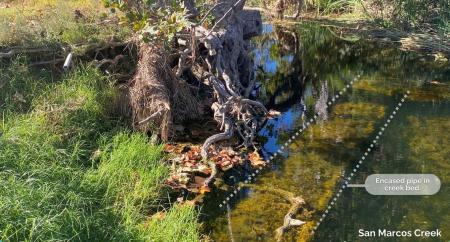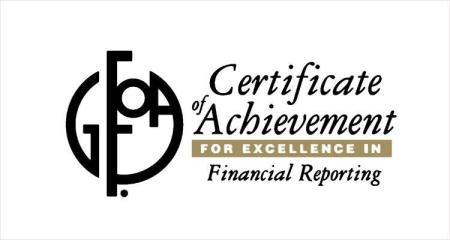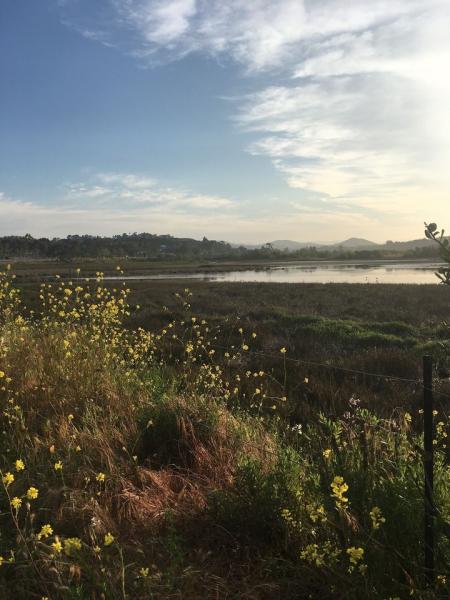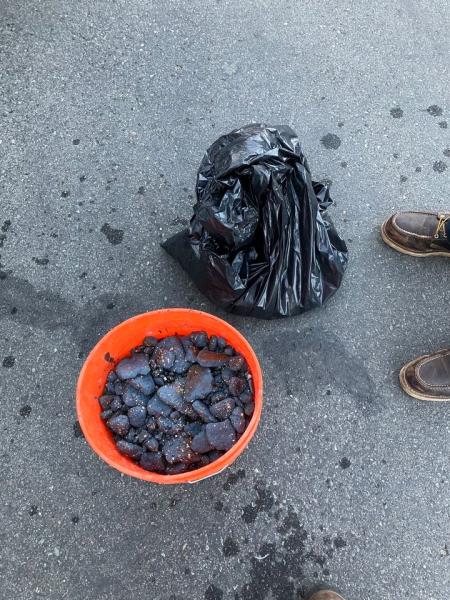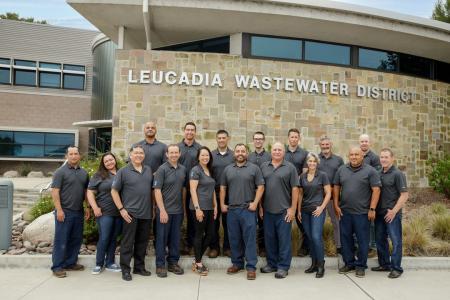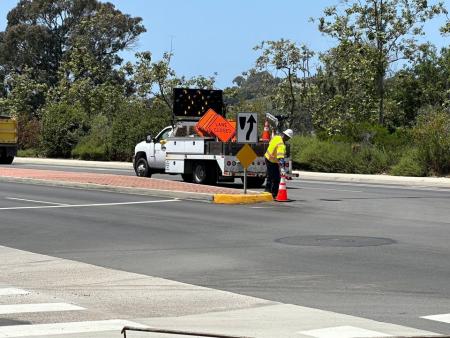Replacing Critical Infrastructure Before It Fails
San Marcos Creek Pipeline Crossing Emergency Repair
In December 2023, the District completed emergency repairs to fortify a sewer pipeline crossing San Marcos Creek on the eastern edge of the La Costa Resort and Spa south golf course.
The pipeline became exposed in the creek, making it susceptible to damage by debris during storm events. When built, the pipeline was three feet under the creek bed. Over time, the pipeline was undercut by erosion and was suspended mid stream.

